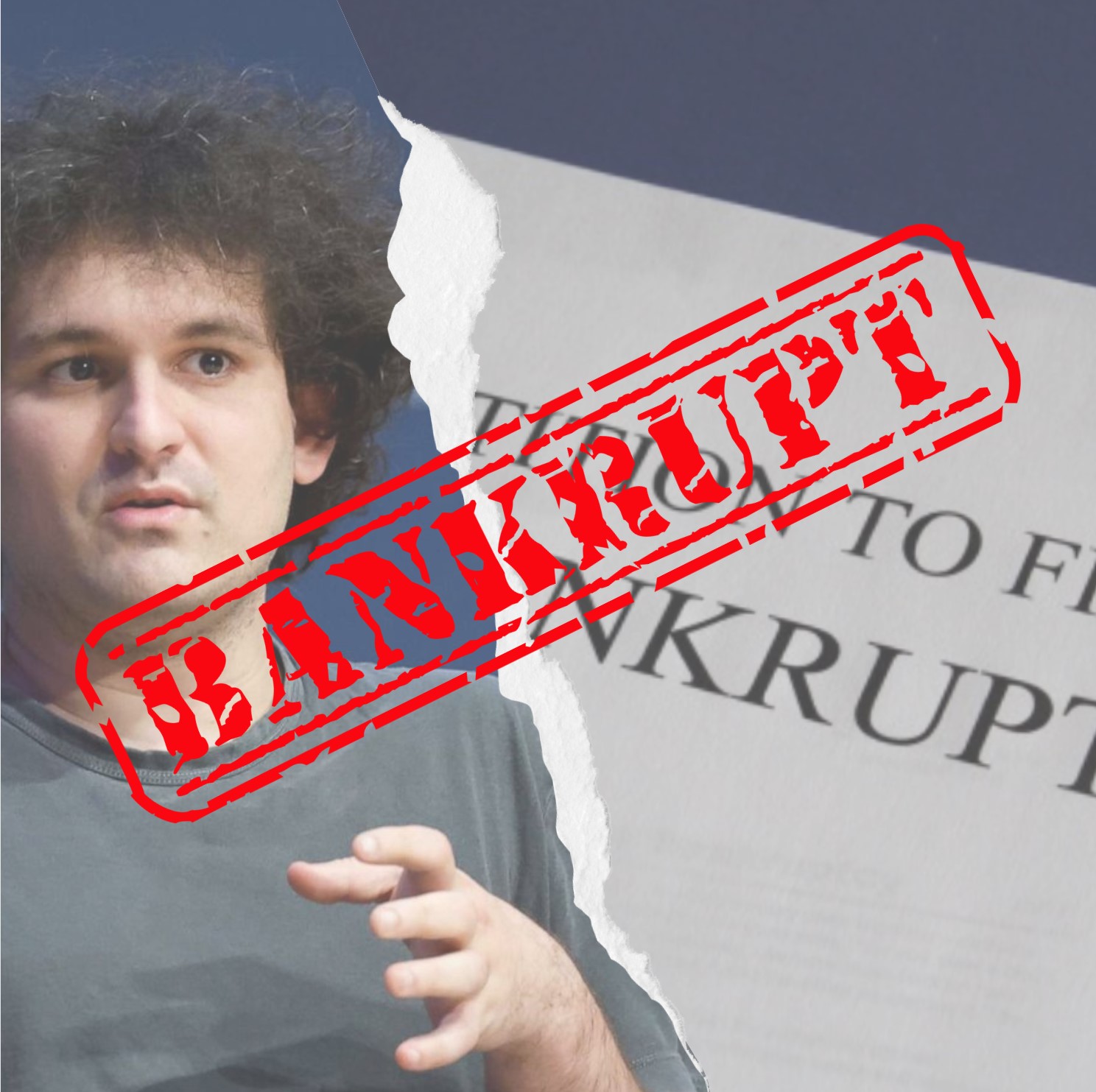What Is a Crypto Exchange Bankruptcy?
When a crypto trading platform goes bankrupt for whatever reason, whether it’s due to a hack, fraud, or just plain stupidity, it means that it cannot pay its debts or meet its financial obligations toward its customers and creditors,
What happens during a crypto exchange bankruptcy depends on where it is located and the rules of that jurisdiction.
For this article, we’ll look at the United States, where an exchange will normally file for either Chapter 11 bankruptcy protection, which reorganizes its assets, or Chapter 7, which liquidates its assets.
FTX COLLAPSE TIMELINE—2022
Nov. 6: Rival exchange Binance sells all FTT tokens.
Nov. 7: FTX announces liquidity crisis, seeks bailout from venture capitalists, then Binance.
Nov. 8: Binance says it will buy FTX’s non-U.S. business.
Nov. 9: Binance walks away from FTX acquisition after conducting due diligence.
Nov. 10: The Bahamas freezes assets of FTX’s subsidiary there; Bankman-Fried admits non-U.S. businesses’ liquidity crisis, says affiliate Alameda Research to wind down.
Nov. 11: Bankman-Fried steps down as FTX CEO, is replaced by a court-appointed CEO with restructuring experience. FTX files for Chapter 11 bankruptcy protection.
Nov. 12: FTX reports an alleged hack, suspected to be up to $477 million, and moves its digital assets to cold storage for security reasons.
Nov. 18: The Bahamas takes control of FTX assets held there.
Dec. 12: Bankman-Fried is arrested by Bahamian authorities. He’s later extradited to the U.S.
Dec. 22: Bankman-Fried is released on a $250 million bond, the largest in history, by a federal judge.
Reasons for the collapse
Alameda’s balance sheet was reported to be heavily stacked with its sister company FTX’s native tokens instead of other cryptocurrencies, which led to a panic selling in FTT.
The fear of insolvency in FTX Group over its financial positions started.
When Binance,the world’s largest cryptocurrency exchange, started to liquidate their holdings in FTT tokens, and later refused to bail out FTX, the situation worsened.
FTX has also confirmed that there had been unauthorized access to its accounts.
FTX filed for bankruptcy along with 130 additional affiliate companies.
FTX Bankruptcy effect on crypto market
Uncertainty – The FTX Group’s bankruptcy has sent shockwaves of fear, uncertainty and ambiguity across the crypto market worldwide.
The issue reminds about the previous case of the Terra tokens collapse that wiped out billions of dollars in wealth.
Effect on other cryptocurrencies – The collapse cast a shadow over the performance of bigger cryptocurrencies such as Bitcoin and Ethereum.
Bitcoin, the largest cryptocurrency, is trading at an almost two-year low around 16,600 dollars while Ethereum dropped more than 8%.
Impact on retail investors – There is a fear that lot of retail investors might go inactive for a while due to the current volatility in the market.
Impact on institutional investors – The institutional investors might like to capitalize on discounted assets at the moment and hedge their investments.
Stringent regulations – Structural changes in the crypto ecosystem and much stricter regulations are expected after this episode.
Positive impact – Other active exchanges could see a flurry of deposits coming in which depends on which exchange is in its best shape at the moment.
===============================================================
FTX BANKRUPT 2023
The bankrupt crypto exchange FTX is facing escalating legal and advisory costs, recent REPORT submitted by the exchange’s bankruptcy advisors have revealed.
Judging from information in the filings, FTX’s advisors billed the exchange a staggering $121.8 million in fees and expenses for the period between February 1 and April 30.
Leading the pack, law firm Sullivan & Cromwell charged FTX $37.6 million, accounting for 30.9% of the total fees and expenses.
On the other hand, investment banking firm Jefferies billed the lowest amount, representing only 0.6% of the total costs.
Further contributing to these costs, restructuring consultants from Alvarez and Marsel billed $37 million, supplemented by over $1.1 million in expenses that encompassed $51,225 in meals, $149,155 in lodging, and other miscellaneous costs totaling $1,995.
FTX’s new CEO John Jay Ray III has been trying to sort out the exchange’s affairs since its collapse in November.
As per UNITED STATES BANKRUPTCY COURT to a court-appointed examiner, the closure of the cryptocurrency exchange FTX will be “very expensive by any measure,” given that professional fees have already exceeded $200 million.
In the end of January, lawyers and other professionals had already accrued close to 35,000 billable hours. 2% of the estate’s assets and 10% of the reported cash had already been spent, while 46 of the 242 attorneys working on the case were paid more than $2,000 per hour.
The largely unregulated financial system in which FTX operates and “nonexistence of even the most basic corporate governance” in the Sam Bankman-Fried led crypto exchange has been cited as a contributing factor to the high costs.
FTX’s new CEO John J Ray III has been attempting to settle the exchange’s affairs since it collapsed in November, and some of his filings hint at an attempt to reboot operations as FTX 2.0.
In the midst of these developments, FTI Consulting has dedicated considerable time and billed fees amounting to $761,997.70 for a workstream titled “Exchange restart,” as disclosed in the filings.
As the bankruptcy proceedings of FTX continue, the mounting costs serve as a catalyst for efforts to revive the exchange and deliver value back to affected customers.
The withdrawal rush revealed the exchange did not have customers’ funds readily available, and prompted a halt on all withdrawals that left cryptocurrency investors uncertain if they would ever recover their funds from the exchange.
what can be happen in crypto market after 2023 FTX bankruptcy
The entire crypto market is swinging from side to side, comfortable in smooth curves and in limited range. After the FTX fallout in 2022, the trust on such currencies has been crushed and the market turned totally in the downside range with no signs of cooling down. However, 2023 gave a fresh opening to major digital currencies including Bitcoin and Ethereum and the crypto market has gradually started to rise up.
Now, the latest development between Binance and the SEC saga has shaken the crypto market once again resulting in a bloodbath across cryptocurrencies.
If we see the current volume in the digital market, then it stands at $1.23 trillion, at the time of writing. However, if we talk about the world’s two largest currencies, BTC and ETH which were clearly topping the charts till last month are showing little signs of recovery at the moment. Bitcoin is trading at $26,900 levels and Ethereum is moving around the levels of $1,730, at the time of writing. Binance’s native token, BNB, recovered from its fall and has risen around 4% in the past seven days.
BNB saw pressure last month ,following the news of the lawsuit and changes filed by the SEC. The SEC alleged that the Binance has misused and commingled customer’s funds and diverted as per their whims. The SEC also alleged that Binance evaded the U.S. securities law, in a bid to keep the big U.S. investors using their platform.
Crypto experts believe that the current situation is difficult and the road to recovery is very long. As most of the currencies still lag very much behind their all-time highs. Such as Bitcoin is still 50% down from its all-time high level which touched in November 2021 at $69,000, similarly Ethereum which is now trading at the levels of $1,700, touched the all-time high levels of $4,000, way back in 2021.
How To Protect Your Crypto Assets Against Bankruptcies?
Ironically, cryptocurrencies were created to protect you against bankruptcies (see the 2008 banking crisis), not join their lists of victims.
One of the best ways to protect your assets is to use a self-custody wallet that you control, which reduces the risk of losing your assets in the event of an exchange hack or bankruptcy. Also called a non-custodial, unhosted, or private crypto wallet, it lets you create your own secret private keys and stay in full control of your assets.
Non-custodial wallets can further be divided into hot wallets (software-based like MetaMask) or hardware wallets (also known as cold storage or cold wallets), which are dedicated physical wallets that keep your private key offline at all times, like Ledger and Trezor.
Remember though, you assume full responsibility for your assets when you use a private wallet. If you lose your keys or recovery seed phrase or accidentally expose them to the wrong third party, you may lose everything.
The demise of FTX shows us that anything is possible in crypto. No solution is 100% foolproof, therefore, it’s best to hedge your bets and spread your risk. Don’t put all your eggs in one basket, and never invest more than you can afford in any one of them.
Consider diversifying your funds across different exchanges and non-custodial wallets, and only use companies and products that you’ve personally thoroughly researched in order to assess their reliability.
How To Recover Funds From a Bankrupt Crypto Exchange?
Centralized crypto exchanges (CEXs) typically own and control the custodial wallets and private keys that hold their users’ deposited digital assets. This means that if they end up going belly-up, in the eyes of the law, the exchange, and not the individual account holders, is considered the legal owner of the contents of the custodial wallet.
These assets now become the property of the bankruptcy estate, ready to get liquidated by the trustee to pay outstanding debts. As a result, investors may only be entitled to a pro-rata share of the estate’s total value with other unsecured creditors, such as vendors, lessors, litigation claimants and the exchange’s customers.
In general, investors may be able to file a claim with the bankruptcy court to recover some or all of their assets. However, the specifics of the recovery process can vary greatly depending on the jurisdiction and the conditions of the exchange’s bankruptcy filing.
Crypto firms typically have a process for distributing funds to customers, but it may take some time for investors to receive their assets. It’s important to be patient and follow the process outlined by the firm as closely as possible. Find out what the necessary paperwork is and submit these forms as soon as you can.
WHERE TO CONTACT US:
Website : WWW.CRYPTOTRADE1.COM
Twitter : https://twitter.com/cctrade11
Telegram : https://t.me/cctrade1
Facebook : www.facebook.com/cryptotrade1
Instagram : www.instagram.com/cryptotrade1/
YouTube : www.youtube.com/cryptotrade1
Email : info.cryptotrade1@gmail.com



